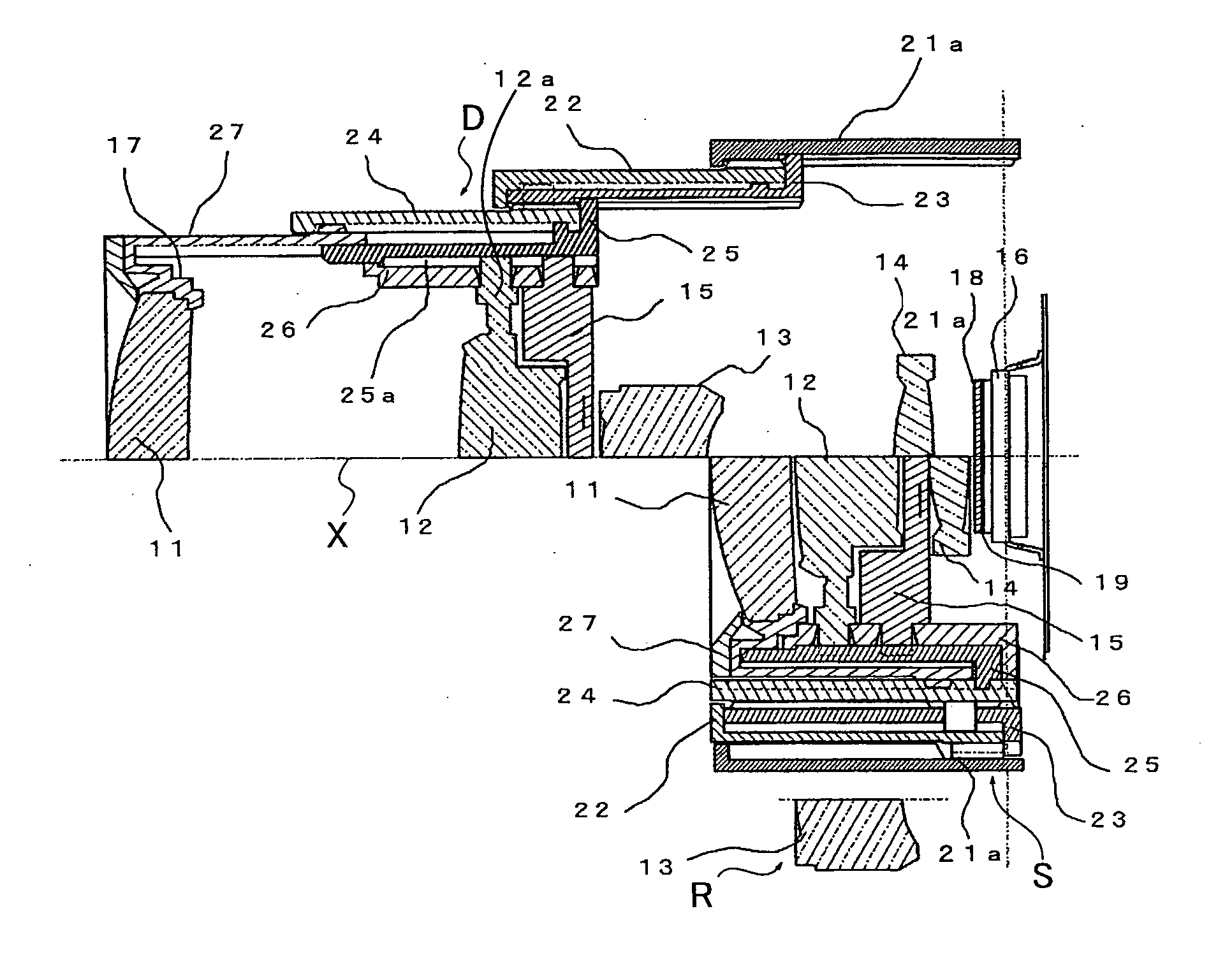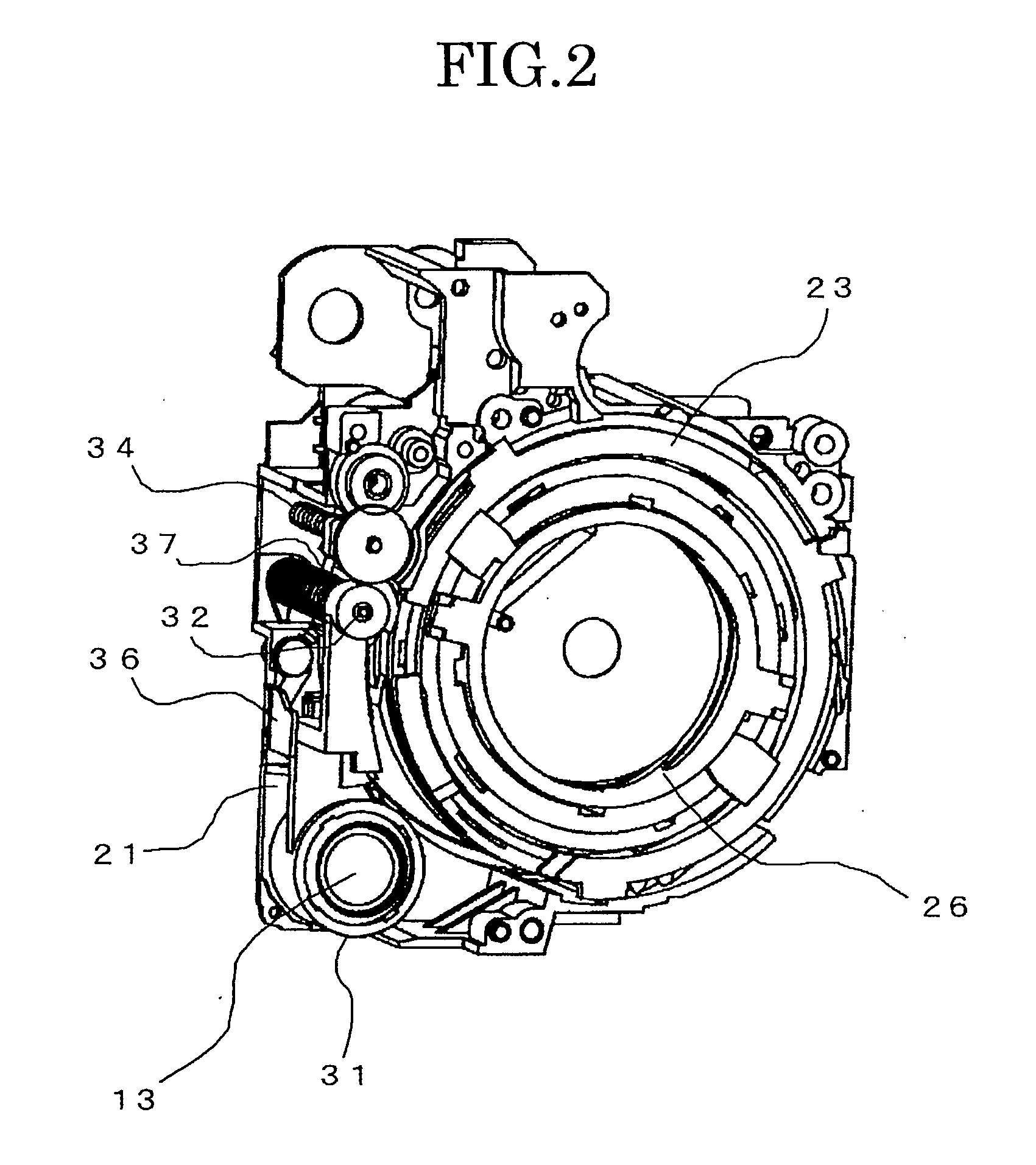Lens Barrel, Camera and Mobile Information Terminal
a technology of mobile information terminal and lens barrel, which is applied in the direction of mountings, printing, instruments, etc., can solve the problems of difficult to reduce the entire thickness of the lens unit including the five lens groups, the lens unit is not suitable for miniaturization of the lens unit, and the lens barrel has a large diameter
- Summary
- Abstract
- Description
- Claims
- Application Information
AI Technical Summary
Benefits of technology
Problems solved by technology
Method used
Image
Examples
embodiment 1
[0377]Next, specific embodiments will be described in detail based on the above embodiment of the present invention. The following embodiments 1, 2, 3, 4 are the embodiments specifically structured by the specific numerical examples of the zoom lenses according to the present invention. The embodiment 5 is the specific embodiment of the camera or the mobile information terminal according to the present invention using the lens unit comprising the zoom lens as described in the embodiments 1 to 4 as the optical system for photographing.
[0378]The embodiments 1 to 4 of the zoom lenses according to the present invention indicate the structures of the zoom lenses and the specific numeral examples. In addition, in the embodiments 1 to 4, the maximum image height is 3.70 mm.
[0379]In each of the embodiments 1 to 4, an optical element comprising a parallel plate disposed on the image side of the fourth lens group assumes various types of optical filters such as an optical lowpass filter and i...
embodiment 2
[0405]FIGS. 30A, 30B, 30C show the structures of the optical systems of the zoom lenses according to the embodiment 2 of the present invention. FIG. 30A illustrates the wide angle position (short focal length position). FIG. 30B illustrates the intermediate focal length. FIG. 30C illustrates the telephoto position (long focal length position).
[0406]The zoom lens illustrated in each of FIGS. 30A, 30B, 30C includes a first lens E1, second lens E2, third lens E3, fourth lens E4, fifth lens E5, sixth lens E6, seventh lens E7, eighth lens E8, ninth lens E9, aperture stop FA and filter / cover FC. In this case, a first lens group G1 comprises the first lens E1 and second lens E2. A second lens group G2 comprises the third lens E3, fourth lens E4 and fifth lens E5. A third lens group G3 comprises the sixth lens E6, seventh lens E7 and eighth lens E8. A fourth lens group G4 comprises the ninth lens E9. Each lens group is supported by an appropriate common supporting frame and the like, and is...
embodiment 3
[0423]FIGS. 31A, 31B, 31C show structures of the optical systems of the zoom lenses according to the embodiment 3 of the present invention. FIG. 31A illustrates the wide angle position (short focal length position). FIG. 31B illustrates the intermediate focal length. FIG. 31C illustrates the telephoto position (long focal length position).
[0424]The zoom lens illustrated in each of FIGS. 31A, 31B, 31C comprises a first lens E1, second lens E2, third lens E3, fourth lens E4, fifth lens E5, sixth lens E6, seventh lens E7, eighth lens E8, ninth lens E9, tenth lens E10, aperture stop FA and filter / cover FC. In this case, a first lens group G1 comprises the first lens E1, second lens E2 and third lens E3. A second lens group G2 comprises the fourth lens E4, fifth lens E5 and sixth lens E6. A third lens group G3 comprises the seventh lens E7, eighth lens E8 and ninth lens E9. A fourth lens group G4 comprises the tenth lens E10. Each of the lens groups is supported by an appropriate common ...
PUM
 Login to View More
Login to View More Abstract
Description
Claims
Application Information
 Login to View More
Login to View More - R&D
- Intellectual Property
- Life Sciences
- Materials
- Tech Scout
- Unparalleled Data Quality
- Higher Quality Content
- 60% Fewer Hallucinations
Browse by: Latest US Patents, China's latest patents, Technical Efficacy Thesaurus, Application Domain, Technology Topic, Popular Technical Reports.
© 2025 PatSnap. All rights reserved.Legal|Privacy policy|Modern Slavery Act Transparency Statement|Sitemap|About US| Contact US: help@patsnap.com



